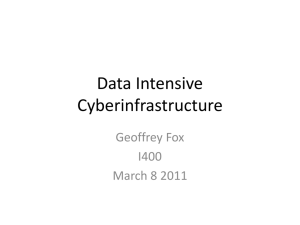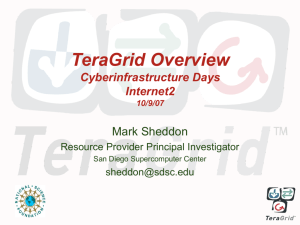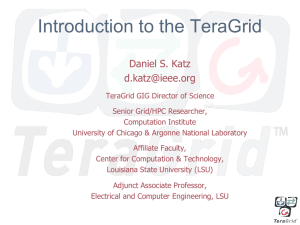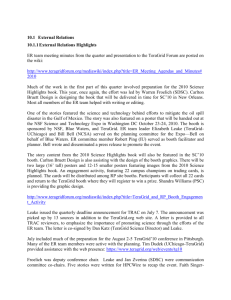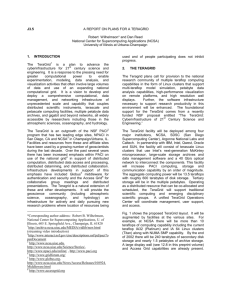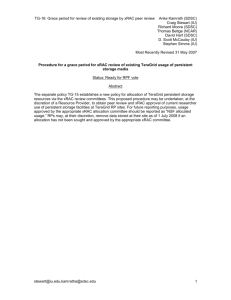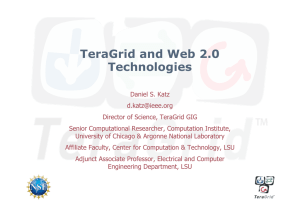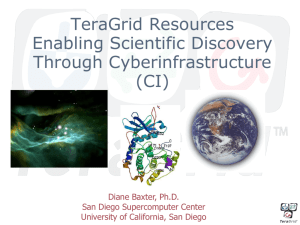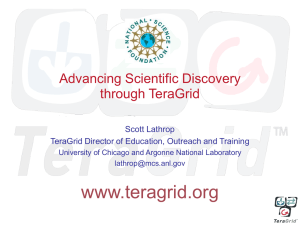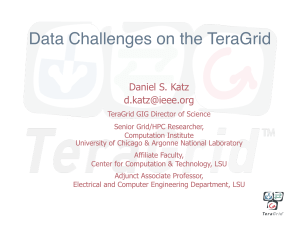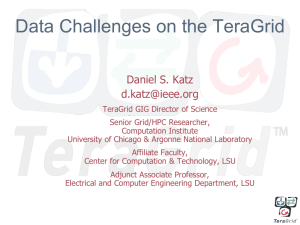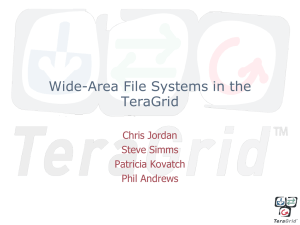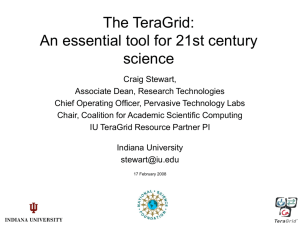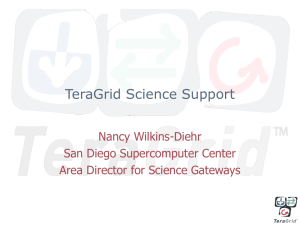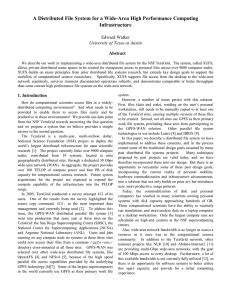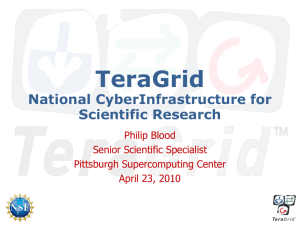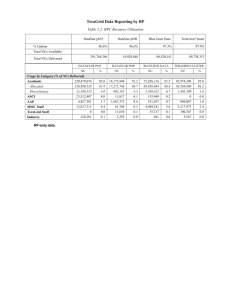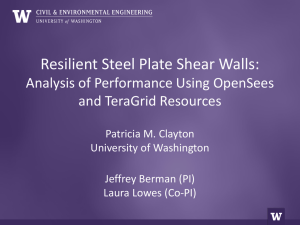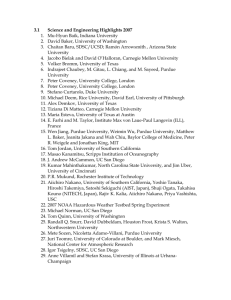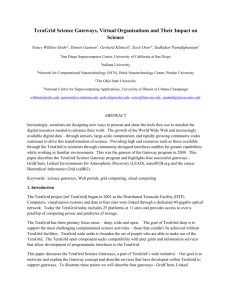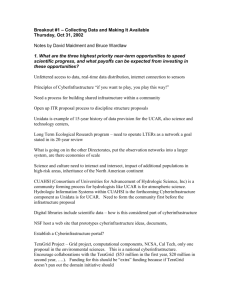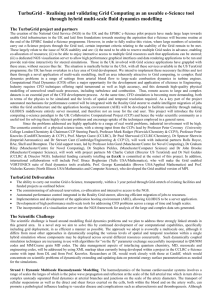Grids, The TeraGrid and Beyond
advertisement
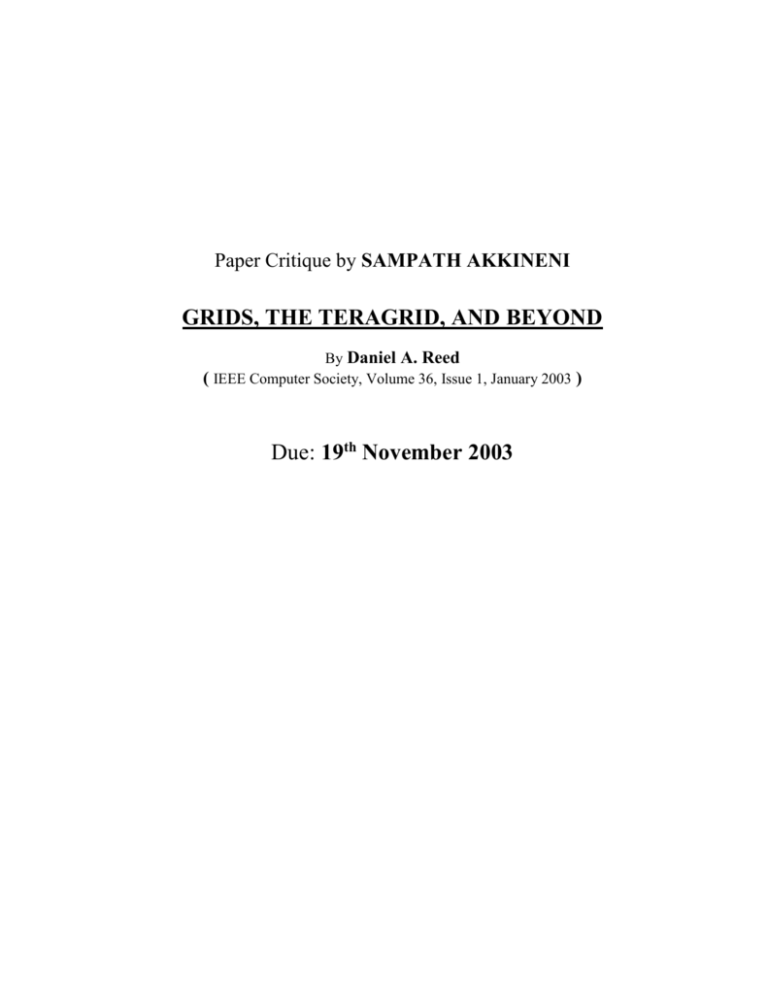
Paper Critique by SAMPATH AKKINENI GRIDS, THE TERAGRID, AND BEYOND By Daniel A. Reed ( IEEE Computer Society, Volume 36, Issue 1, January 2003 ) Due: 19th November 2003 Summary TeraGrid or Extensible Terascale Facility (ETF) is a massive research computing project funded by National Science Foundation. TeraGrid project includes combining five large computing and data management facilities to create a distributed information technology infrastructure to support collaborative computational science. Worldwide scientific infrastructure can be created by combining numerous resources all over the world. TeraGrid is a virtual supercomputer built from individual clusters linked by very high speed cross-country networks. The following partners are involved in the TeraGrid project National Center for Supercomputing Applications at University of Illinois San Diego Supercomputer Center at University of California Argonne National Laboratory, Mathematics and Computer Science Division California Institute of Technology, Center for Advanced Computing Research Pittsburgh Supercomputing Center The TeraGrid is being constructed as a persistent infrastructure within which resources are individually managed at individual sites, but they provide some agreed upon grid services. TeraGrid architecture contains Linux based HPC clusters powered by Intel’s 64-bit Itanium2 processors and other open source software. TeraGrid components will be integrated using Linux and grid middleware Globus toolkit which contains software for intracluster interactions. Globus toolkit will also help with tasks like discovering what resources are available on the grid and deciding what jobs have permissions to use them. After completion, this TeraGrid project will include more then 16 Tflops of Linux cluster computing distributed across the facilities that can manage and store 800 Tbytes of data. As part of this TeraGrid project, researchers are working on projects like gravitational wave detection, earthquake simulation, digital sky surveys and system biology etc. Other research proposals are being accepted from researches and solutions for those problems will be found as part of this TeraGrid project. Strengths TeraGrid will help researchers solve complex problems that are beyond the capabilities of conventional supercomputers. Reduce or eliminate the barriers of time and space that make it difficult for distributed research groups to collaborate Complex real world problems can be solved with the availability of high speed computational power and ability to analyze huge amounts of data Allows people to tap into computing power, data resources and collaboration tools based on their needs no matter where those tools or resources are located Enables data and resource sharing among collaborating groups Weaknesses Privacy and security are major concerns as there is huge amount of data and resource sharing among the participants TeraGrid architecture introduces multiple points of failure as any computing facility can fail any time Interesting Points The scale of TeraGrid is unprecedented in the history of computing. Success of TeraGrid will be measured by how well it functions, how faster it is in comparison with the existing traditional computing environments Scalability and extensibility are critical factors for the success of TeraGrid project. Information exchange protocols and data formats need to be defined and implemented at individual facilities Critical Questions Is the TeraGrid interoperable? Is it possible to join the systems running on different operating systems / languages to form a distributed computing environment? How simple/complex is it to add other computer facilities and make the TeraGrid scalable? How safe / vulnerable is the TeraGrid from internet attacks? Are there any benchmarks against which the grid’s performance will be measured? How can data integrity be maintained when huge amounts of data is shared and exchanged between the facilities?
